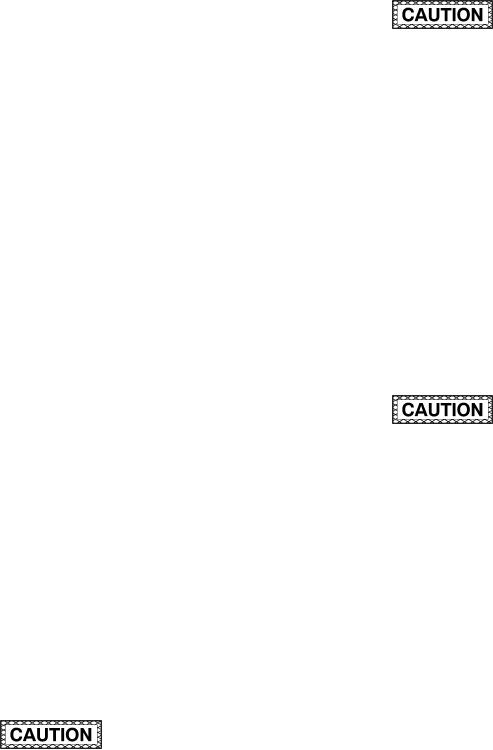
TM 1-1500-204-23-11
tendency to be pulled and stretched
neither the repair nor the thermocouples are
when the vacuum is applied. Do not
within the cold zone. Failure to do so will
place thermocouples directly on the
result in a repair that may be overcured.
patch as they will leave a mark during
(h) Select a heating blanket large enough to
cure.
extend a minimum of 2 inches beyond
the patch edge.
(d) Lay a piece of porous release ilm over
the patch. The porous release ilm
should extend 1-1/2 inch beyond the
edges of the patch area.
The dimensions of many of the materials cut
(e) Lay bleeder material over the porous
for use in this procedure are based on the
release ilm. This should be the same
size of the heat blanket.
size as the porous release ilm. Avoid
wrinkles. Place the number and type of
(i)
Cut a piece of bleeder material or dry
bleeder plies as speciied by the system
satin cloth 1 inch beyond the edges
speciic technical manual. The number
of the heating blanket. Lay piece of
of bleeder plies is determined by the
bleeder material over the release ilm.
number of repair plies in the patch, type
Contact between the edges of the
of bleeder cloth used, and the desired
bleeder plies and the breather cloth
resin content.
applied later must exist in order for an
adequate air path to exist.
(f)
Lay a piece of non-porous release ilm
over the bleeder material. The release
(j)
Lay heating blanket on top of bleeder
ilm should not extend past the bleeder
material.
edges. Avoid wrinkles.
(k) Solvent clean the area where the vac-
NOTE
uum bag sealant will be placed step
6-18(l). After the dry wipe, allow 10 min-
The area within the rubber adhesive tape
utes for any residual solvent to evapo-
must be large enough to accommodate the
rate.
heat blanket, breather cloth and vacuum port
assembly according to the bleeder schedule
being performed.
If using a caul plate for the repair, it is
Failure to separate thermocouple wires where
a requirement to evenly distribute the four
they exit the vacuum bag will result in leaks
thermocouples on top of the caul plate.
and failure to achieve minimum acceptable
vacuum.
The minimum permissible vacuum for com-
posite repairs is 20 inches Hg unless a lower
NOTE
vacuum is speciied.
If thermocouple wires or heat blanket power
(g) Place caul plate (if used). Ensure caul
cables contain outside insulation in addition to
plate matches the contour of the repair
individual wire insulation, the outside insulation
and is slightly larger than the patch; fail-
must be removed to prevent vacuum leaks.
ure to do so will result in inconsistent
Remove 1 inch of outside insulation in the
pressure and poor structural properties
area where wires interface with bag sealant.
of the inished part. Caul plates may
The area within the rubber adhesive tape
be used to ensure a smooth patch sur-
must be large enough to accommodate the
face and facilitate even heat distribution
heat blanket, breather cloth and vacuum port
across the repair.
assembly according to the bleeder schedule
being performed.
(l)
Apply vacuum bag sealant tape com-
The area within 2 inches of the edge of
pletely around the repair area. Apply
any heat blanket is known as the "cold zone"
extra sealant tape over the heat blan-
and is unreliable for achieving and maintaining
ket and thermocouple wires. Leave the
the proper cure temperature. Exercise special
backing paper on the sealant. Press
care when selecting a heat blanket so that
sealant onto part surface. Inspect the
6-55

